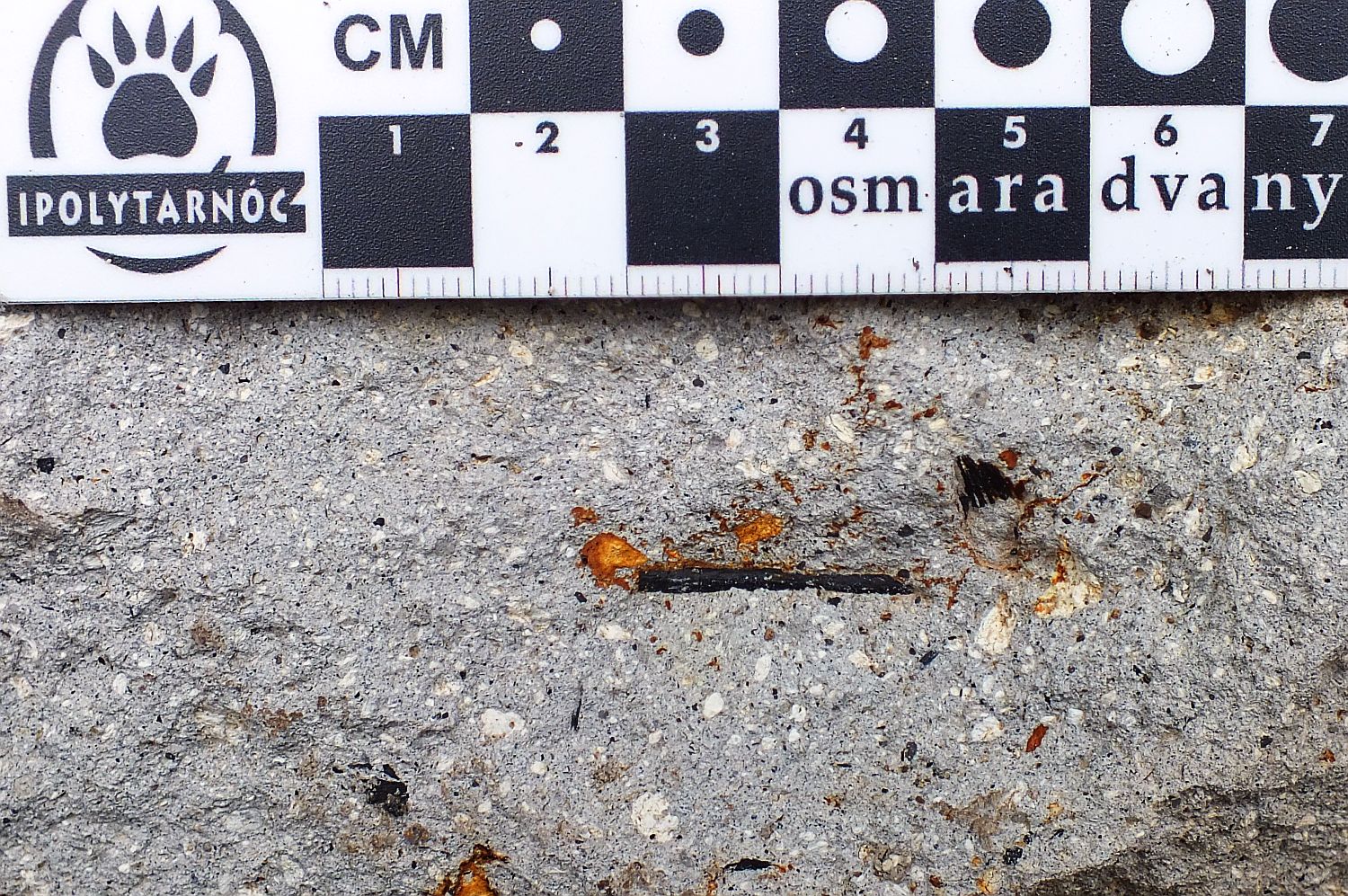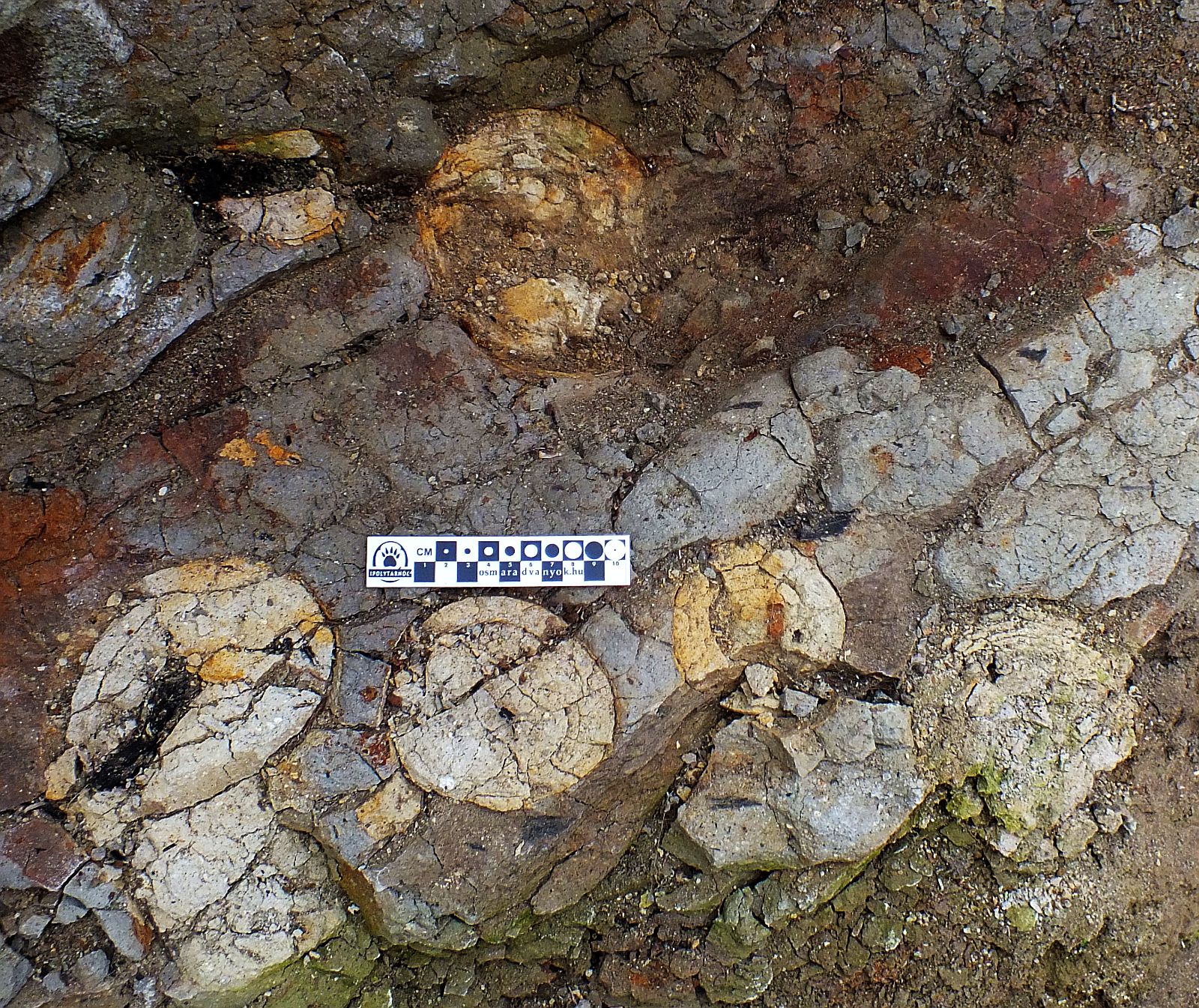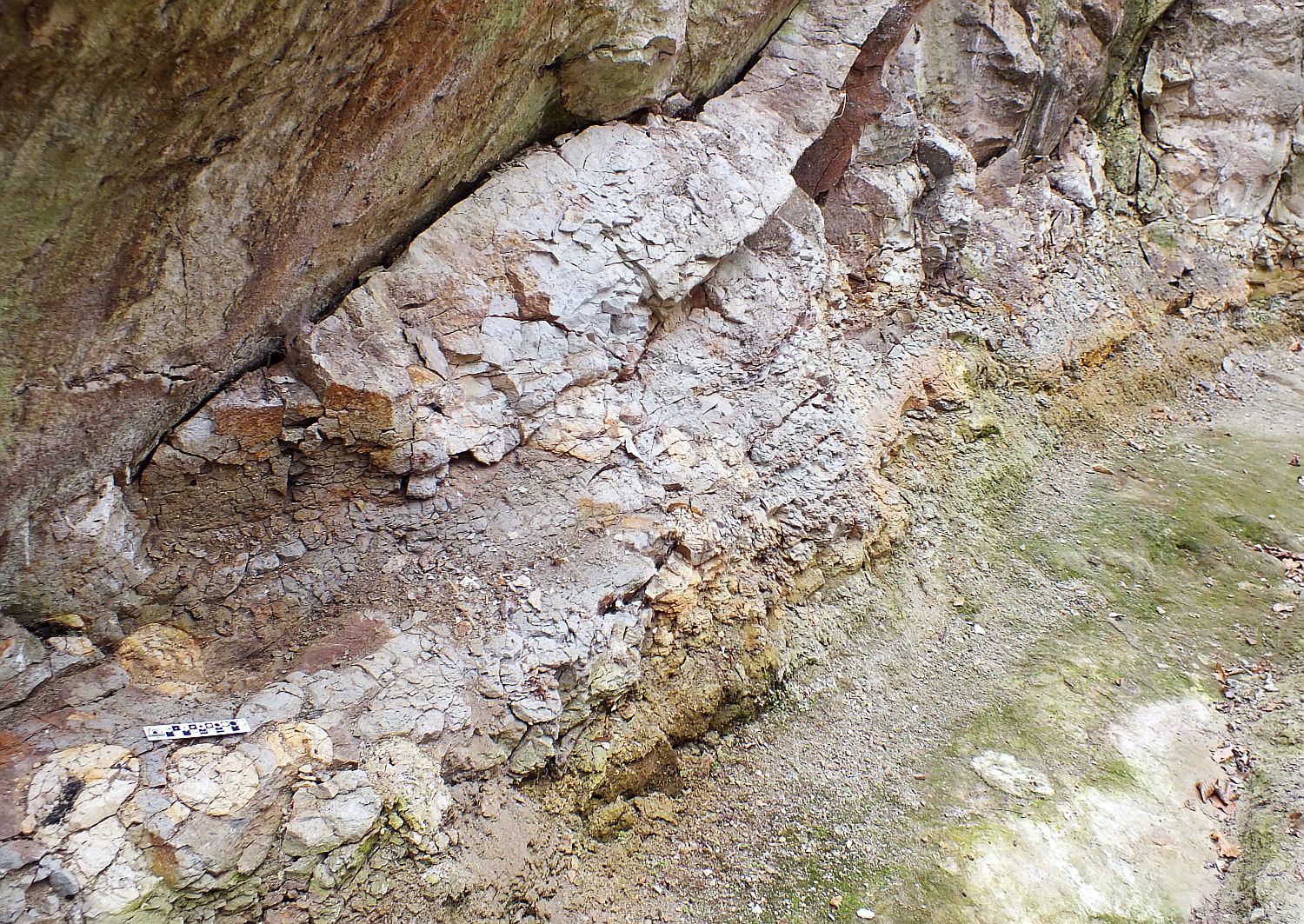WHAT'S NEW
Ottó Csengődi the self-taught talented palóc artist is a nature lover. He is able to create special nature art from decayed wood, roots and tinder fungus.
Hedvig is our newest worker in the protection of the site. She is a kind of winged ranger, but not an angel, do not be mistaken. Her joining us is quite a story!
A wristband ticket system has been introduced by the Bükk National Park Directorate at the Ipolytarnoc Fossils. The wristband tickets enable the visitors for a day-long staying at the Prehistoric Pompeii.
THE VOLCANIC CATASTROPHE
A volcanic catastrophe destroyed the environment of ancient Ipolytarnóc 20 million years ago. The grey volcanic rock, rhyolite tuff, which demolished the paleohabitat, appears on the surface on both sides of the geological trail towards the Great Hall. It contains the charred remnants of the ancient vegetation. 

The volcanism started with ashfall deposition, blanketing the
Then a firey deluge of ashflow, ignimbrite came, like an avalanche, burning and burying everything on its way.  The base surge's accreted lapilli, tuffballs are easy to identify along the geological path. According to radiometric dating, measurements, the volcanic catastrophe destroyed the paleo- habitat of Ipolytarnoc 19.6 million years ago, although recent studies debate this date.
The base surge's accreted lapilli, tuffballs are easy to identify along the geological path. According to radiometric dating, measurements, the volcanic catastrophe destroyed the paleo- habitat of Ipolytarnoc 19.6 million years ago, although recent studies debate this date. Back to FOSSILS
Then a firey deluge of ashflow, ignimbrite came, like an avalanche, burning and burying everything on its way.
 The base surge's accreted lapilli, tuffballs are easy to identify along the geological path. According to radiometric dating, measurements, the volcanic catastrophe destroyed the paleo- habitat of Ipolytarnoc 19.6 million years ago, although recent studies debate this date.
The base surge's accreted lapilli, tuffballs are easy to identify along the geological path. According to radiometric dating, measurements, the volcanic catastrophe destroyed the paleo- habitat of Ipolytarnoc 19.6 million years ago, although recent studies debate this date.
